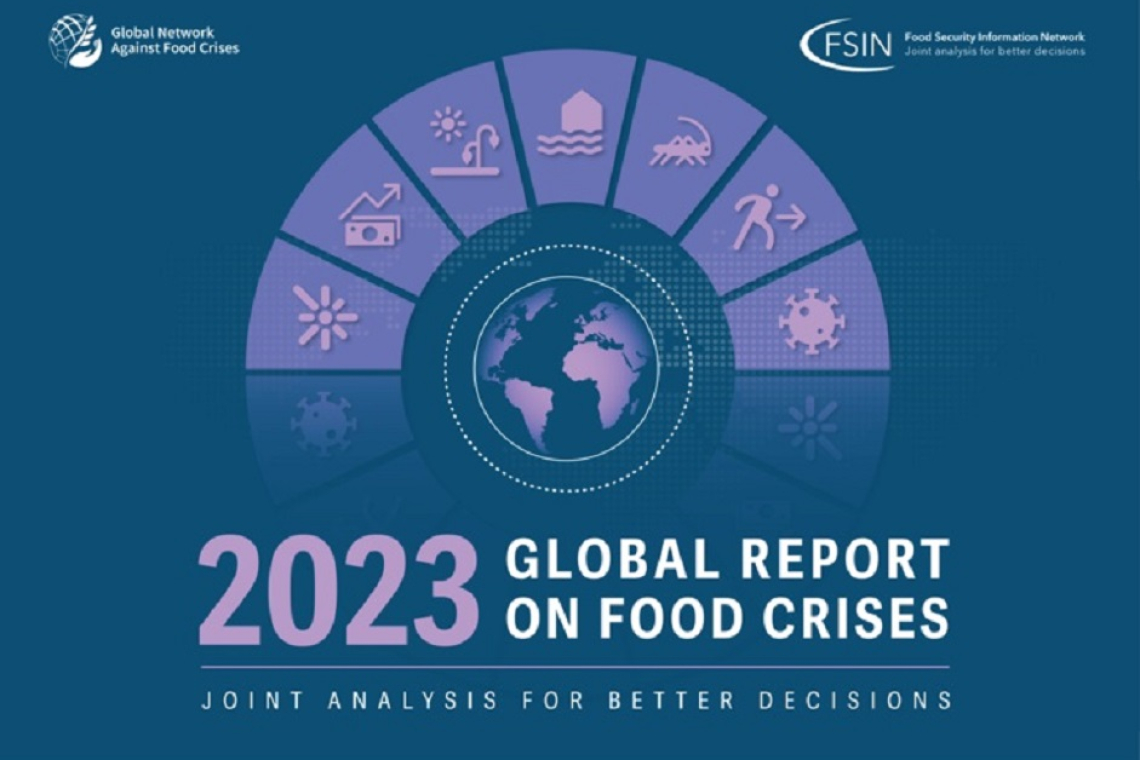Cover of the Global Report on Food Crises (GRFC) 2023.
PORT-AU-PRINCE, Haiti--According to the Global Report on Food Crises (GRFC) 2023, for the first time in the history of the Integrated food security Phase Classification (IPC) scale, Haiti is one of the seven countries in the world that are facing an extreme lack of food.
Haiti had more than 19,000 people in Phase 5 between September 2022 and February 2023 in the commune of Cité Soleil, where gang violence has severely compromised supply chains and forced people to stay home.
The other countries affected by an extreme lack of food are: Somalia (214,000 people); South Sudan (87,000); Yemen (31,000); Afghanistan (20,300); Nigeria (3,000) and Burkina Faso (1,800).
In Haiti, the population is facing high levels of acute food insecurity (IPC Phase 3) which could increase slightly due to urban insecurity and violence, high inflation as well as the lingering effects of previous natural disasters. Some 4.72 million people or 48% of the population analysed were or are in Phase 3 between September 2022 and February 2023.
In the last quarter of 2022, the number of people facing Crisis (IPC Phase 3 or above) was the highest reported in seven years for Haiti due to widespread insecurity and gang violence in major cities, a macroeconomic crisis characterised by seven years of double-digit inflation, five years of recession, impacts of natural hazards including the 2021 earthquake, and low agricultural production.
Nearly half of the population analysed was in IPC Phase 3 or higher, between September 2022 and February 2023. Of the 32 areas analysed, 15 were classified as Emergency (IPC Phase 4), mainly in the Grand Sud, Haut Plateau and its extensions in the North, Artibonite and North-West, Gonâve.
The IPC Scale is measured as follows:
* Phase 1: Access to a generally adequate and stable diet with a moderate to low risk of gradually falling into higher phases;
* Phase 2: Moderate/limited food insecurity – limited access to adequate food with a high and recurrent risk of gradually falling into Phase 3, 4 or 5 (due to the likelihood of adverse events and high vulnerability);
* Phase 3: Acute food and livelihood crisis – acute and critical lack of access to food with severe and unusual malnutrition and accelerated depletion of livelihood assets which, if the situation continues, will cause the population to fall into Phase 4 or 5 and/or is likely to result in chronic poverty;
* Phase 4: Humanitarian emergency – severe lack of access to food with excessive mortality, very high and increasing malnutrition and irreversible depletion of livelihood assets; and
* Phase 5: Famine/Humanitarian crisis – severe social disruption with complete lack of access to food and/or other basic needs in which widespread starvation, death and displacement are indisputable.
The GRFC is published by the Food Security Information Network. It is the reference document on acute food insecurity at global, regional and national levels in 2022. The GRFC aims to provide an independent and consensus assessment of acute food insecurity able to document humanitarian action and development initiatives.
Download the Global Report on Food Crises 2023 (English .pdf 203 pages) at:
https://www.haitilibre.com/docs/GRFC2023-compressed.pdf. ~ HL/HaitiLibre ~







